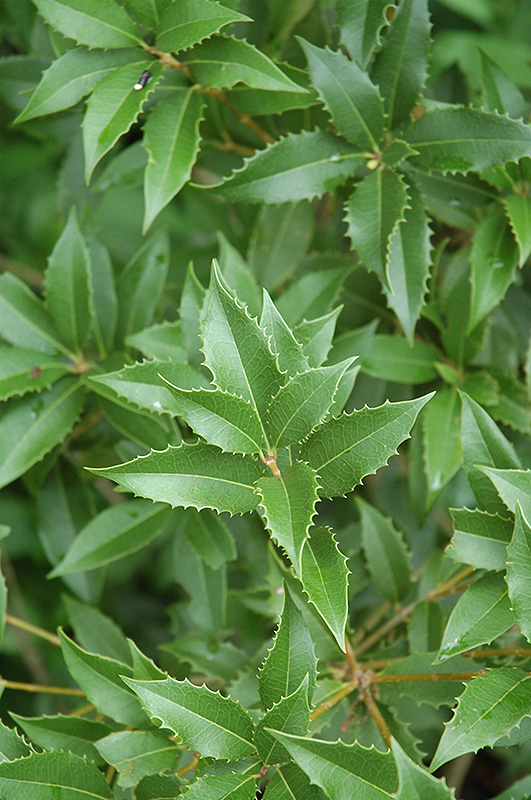Plant Finder
Height: 15 feet
Spread: 15 feet
Sunlight:
![]()
![]()
Hardiness Zone: 6b
Other Names: Tea Olive, False Holly, Olive Holly
Description:
A somewhat rare shrub with incredibly spiny, lustrous leaves that are holly-like, but it's actually related to lilac and privet; a more upright shrub, covered with fragrant, white trumpet flowers; more adaptable than holly
Ornamental Features
Fortune's Sweet Olive is covered in stunning fragrant white tubular flowers along the branches in early fall. It has attractive dark green evergreen foliage. The small spiny oval leaves are highly ornamental and remain dark green throughout the winter. The smooth dark gray bark is extremely showy and adds significant winter interest.
Landscape Attributes
Fortune's Sweet Olive is a dense multi-stemmed evergreen shrub with an upright spreading habit of growth. Its average texture blends into the landscape, but can be balanced by one or two finer or coarser trees or shrubs for an effective composition.
This is a relatively low maintenance shrub, and is best pruned in late winter once the threat of extreme cold has passed. Deer don't particularly care for this plant and will usually leave it alone in favor of tastier treats. Gardeners should be aware of the following characteristic(s) that may warrant special consideration;
- Spiny
Fortune's Sweet Olive is recommended for the following landscape applications;
- Accent
- Mass Planting
- Hedges/Screening
- General Garden Use
- Topiary
Planting & Growing
Fortune's Sweet Olive will grow to be about 15 feet tall at maturity, with a spread of 15 feet. It tends to fill out right to the ground and therefore doesn't necessarily require facer plants in front, and is suitable for planting under power lines. It grows at a slow rate, and under ideal conditions can be expected to live for 40 years or more.
This shrub does best in full sun to partial shade. It does best in average to evenly moist conditions, but will not tolerate standing water. It is not particular as to soil pH, but grows best in rich soils. It is highly tolerant of urban pollution and will even thrive in inner city environments. This particular variety is an interspecific hybrid.




